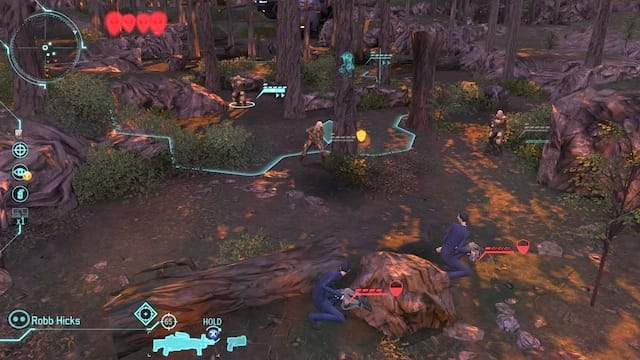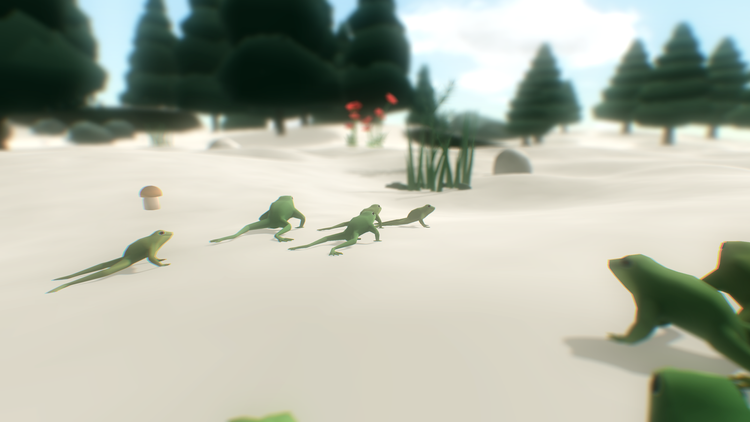We talked to the guy who is remaking XCOM, finally

PC gamers regard the turn-based alien-invasion nightmares XCOM: Enemy Unknown (1994) and XCOM: Terror from the Deep (1995) as two of the best games ever made. Despite persistent pleas from fans to continue the main series, XCOM remained mostly dormant as the industry shifted from 2D to 3D environments. “Spiritual successors” and embarrassing or bizarre spin-offs came and went. Fans had mostly lost hope, until earlier this year when Firaxis Games – the studio run by Civilization legend Sid Meier – announced that they were developing a modern remake of the original game. I caught up with Jake Solomon, the game’s lead designer, to talk about remolding the classic for a new generation of developers and gamers.
Kill Screen: Why did it take so long to get a new XCOM off the ground?
I was certainly pushing for it for quite some time. The real problem was that the original was in 2D. It had all these things we considered core to the experience—fog of war and destructible environments. If we make a game called XCOM without destructible environments we’re not really making XCOM. And so we were uncomfortable—a lot of times with Firaxis, we make Sid [Meier’s] games, right? We wanted to make a real XCOM. But destructible environments ten years ago—let’s say if we started the development process then, that would’ve been crazy.
So we couldn’t do it! Plus the team—I mean, not the skill set, but in terms of the guys actually interested in making the game, there probably aren’t that many. There’s certainly a big fan base towards these games, but in terms of the industry, the game is turn-based. And I feel like it has to be turn-based.
Has there been a general turn away from turn-based games? Did you adapt the game at all to this trend?
This development process has been very long, and I’ve considered a lot of things design-wise. This may be too technical, but this game had to be turn-based because soldiers die in it. So if I’m killing the player’s soldiers, I can’t have the AI at any point controlling the soldiers. Like if the AI is pathing your guy to get shot, you’re gonna be like, “well that’s fucking bullshit! I wouldn’t have walked there.”
Basically I want to make the game fair. If I’m gonna make it really hard, and have these real consequences like permadeath, then the player has to perceive the experience as completely fair. The only way to do that with a squad—maybe in a real-time game you’d take it as fair for the computer to steer one of your characters—but in turn-based, they have to have the time to say “ok you move there, you move here. I’m in control at all times.” It’s almost like a sport where you lay out the rules, and you say, “We both have an agreement.” When a soldier dies, a player should say, “Oh, that was a risk I knew I was taking and it didn’t pay off.”
Do you think you can make this game as ridiculously difficult as the original? I remember so many times half my squad would die just stepping out of the ship.
For me, eliminating challenge from the game isn’t the way to go, because it’s core to the experience in terms of actually creating tension. So that’s a great example—getting off the drop-ship and having everybody fucking blasted, right? When old gamers get together we talk about that with nostalgia—“Wasn’t that awesome? That game wouldn’t give a shit! It would just shoot all your guys!” But as a designer, I’m sort of like, “what the fuck am I doing?” Players are just gonna get off the drop ship and die, there’s no recourse? Unless I’m trying to teach them something philosophically, there’s nothing the player’s going to take away from this. So we’ve tried to eliminate anything that comes across as having no counter to it. The game isn’t just like, “Eh, sorry! Tough shit.”
Well in terms of the difficulty of the original games, part of that stemmed from managing so many different resources across the globe at the same time—raising money, recruiting soldiers, fighting back alien ships, not to mention having to choose between different missions. Since you switched to having only one home base, how are you preserving that?
Well you want to create that sort of race condition. What you’re talking about is something where the panic levels rise, countries start to leave the project, always being strapped for cash. As a designer I want the player to feel like they’re always hanging on by their fingernails. Like, ok you’ve clawed this in and really you’re just trying to drive the aliens out. But at the same time as you’re playing that game, the aliens are trying to make earth succumb, and you’re racing along the research and development trees and trying to manage everything else, because pretty soon it’s just going to become an unmatchable situation.
How are you trying to tell a story with these soldiers—do you see them as characters that evolve in the game’s narrative arc?
We’ve got two different stories that we’re trying to tell here. The external narrative of the game already has a story it wants to tell—if I say something like “alien invasion” you’ve already got a good picture. But I think that more important than the external narrative—and this is from the original game—the internal narrative is really strong. It’s not the sort of thing that peaks and has a climax, but I’ve done everything I can to reinforce that internal narrative. The soldiers are all from different countries from around the world. They’re all walking around with flags on their backs. At a certain point, when they reach a certain rank, then they earn a nickname. When you go back to the ant-farm in the base—you see them interacting, your favorite soldiers standing there shooting pool. When they die, there’s an area of the bar that is a memorial. So you can go to the bar and see a list of all the soldiers that have died. We try to put as many soldiers as you care about in the cinematics. We can’t have them speak because we don’t know if they’re dead. There are a lot of things we can’t do narratively, but I think we make up for it by having these soldiers that really mean a lot to the player.
So you try to form that relationship with the character in the gameplay itself?
Yeah, you start to have these memories of these guys pulling things off that seem unlikely. Their characteristics evolve. Soldiers can get critically wounded, for instance. Even if you save them, their will-stat is permanently penalized. So they panic a lot more in combat—soldiers will lose their shit and start running around and lose hope. They’re more susceptible to mind control from the aliens. They just start to become a little shakier, and those sorts of things create this bond with your characters that’s surprisingly strong, as opposed to forcing a narrative on your character that’s like, “This is Joe, he’s had a tough life, but he’s a heart of gold.” So instead we just said “this is rookie so-and-so.” Maybe he’s dead the next mission, or maybe he took out three guys and you’re like, “I like this guy…”
One thing I noticed from the preview is that, since the sound quality is so much better than the original, I actually heard this cry of pain from the alien when he was killed, and I actually empathized with him in that moment as well. That’s something I don’t remember in the original.
It’s funny that you say that. Our first version of the sectoid was much more upright—right now he’s feral and animalistic and sounds very bird-like. Before, he almost looked like a kid with this high-pitched voice. Sid was playing the game—this is a true story—and he just said, “You have got to change this. This feels like you’re shooting innocent children!”
Do you get a better sense of the aliens and their motivations or history than you did in the original games?
We do, but because we want the player to play multiple times we don’t want to close any doors narratively. So instead the idea is that you can perform autopsies and interrogate the aliens to get a lot more narrative information. At the end of it, you’ll get a lot of closure. But we want players to fire it back up thinking these guys are still a bit of a mystery—I don’t want you to finish and think, [snaps his finger] “Okay, the butler did it.”

Above: The original XCOM: Enemy Unknown
What are the inspirations for the design of the aliens? The little gray men look like very standard X-Files Martians—big head, big eyes.
That was sort of our jumping-off point. The first UFOs are disc-shaped, because we wanted it to start in the same place where the original game did, which came from a very campy sense of UFO mythology—The X-Files was very popular when the first games were made. One of the new aliens we’ve shown off is this tall, slender man in a suit. He’s really bizarre—he’s incredibly flexible, he can leap really high—it’s a very creepy thing to see the human form extended and twisted. That came from the same place of UFO mythology—we looked at Men in Black, the infiltrator in a black suit. Again it’s not necessarily campy, or campy in a bad way, but the player already has a back-story about aliens in their minds, so we wanted to take advantage of that.
It struck me in Enemy Unknown and Terror from the Deep that you became more and more like the aliens as you researched them more extensively—borrowing their models for weaponry, armor, etc.
Yes! One of the game’s main narrative themes is evolution. At more advanced levels, we set out to really hide the human form. I don’t want it to become this fuzzy statement like, “Oh my God, then you are the aliens!” But there is this sense that there are so many different species invading the planet that are forcing humans to evolve very rapidly. By the end of the game, we want the player to be fielding this force of troops that’s not entirely human—the things they can do, their armor and weapons. We want to make it clear that the aliens have had a real impact on our future.



